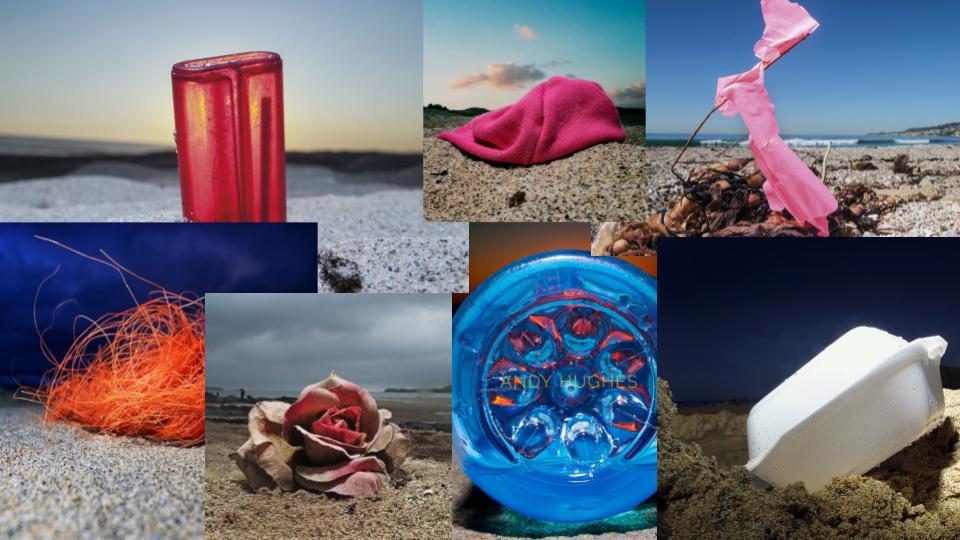
Hughes spent almost 30 years making images along various coastlines until the late 1980s when he started photographing various items of trash along the intertidal zone. As a young art student, Hughes recalls seeing the exhibition Rubbish and Recollections, by Keith Arnett, co-organised by a renascent Oriel Mostyn, Llandudno and the Photographers’ Gallery, London which the content inspired him and with his experiences of living and surfing in south Wales helped influence the inspiration. Between 1999 and 2006 the photos of the plastic waste being washed up by the waves where he surfed became so constant and time consuming of his work that this project was published in the book ‘Dominant Wave Theory’.
“Whilst Hughes’ images of plastic depicted in heroic scale may give us some concern about waste material and its impact upon a sensitive maritime environment, there is another side to these intelligent images. Hughes presents us with not only an ecological message but a knowing heady rush through artistic strategies using the power of photography’s saturated colour to highlight, frame, and play with scale, in an irreverent awareness of art historical practices”.
Andy Hughes work focuses on the littoral zone and the politics of plastic waste. His photography is focused with the idea of ‘thing-ness’ of plastic, watery worlds and coastal habitats. He has been recently venturing out into gamification (game design), ruinology (the stuidy into reconstructing ruins) and poetry. Which internally gets him to proceed in philosophy, literature, art and film, including archival film, as well as interfacing with scientific research. With the interest in radical conceptions of materialism and the impact this has for politics, ecology and the everyday way we think of others, the world, and ourselves.
In 2013 Andy Hughes was invited to be one of the three artists to join the worlds first project to explore the integration of science and art to document and interpret the issue of plastic pollution in the marine and coastal environment.

“This image rejects any attempt at trying to illicit the ‘perfect moment’, all notions of the ‘special moment’ at sunset are reversed. The upturned cigarette lighter acts as a kind of inverse black monolith. The monolith from Kubrick’s 2001: A Space Odyssey, a film that explores elements of human evolution and technology. The setting sun is precisely centred, cascading the light rays through a scratched and distorted plastic surface, plastic becomes distressed, bruised and scared like human skin.”
Image Analysis

The light is a natural sunlight coming from the centre, straight above the object, casting a directly underneath shadow. The image has very little control due to natural lighting, lack of positioning control and natural landscape. With the aperture the focus point is the paper bag with a sharp focus. The shutter speed has an under exposure time as if the image was over exposed then the image would be a bright white image due to the bright sun.
In the image there can be seen some saturated colours such as the blue sky, yellow sand and brown paper bag. As the paper bag is crumpled up the image appears to have more texture due to the creases and with the sand it has a rough surface due to people walking and the sea creating an uneven surface adding extra texture to the image. the bright lines of the sun at the top of the image leads the eye to the centre of the image, the bag.
This photo was taken at Muscle Beach, Los Angeles, 2004. This was a way to capture human behaviour at it’s worst point with little to not change on how it looks but just presented as a way of advertising that this ins’t okay with the disrespect of nature around us. We should care for our planet instead of trying to ruin it and mistreat its beauty.
Photo Shoot Plan

